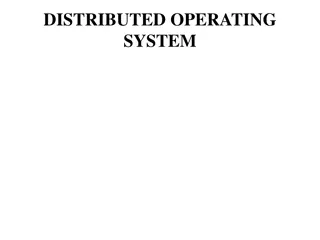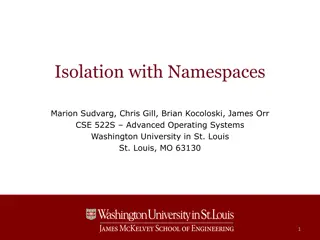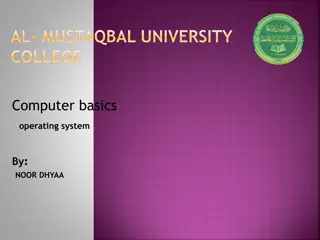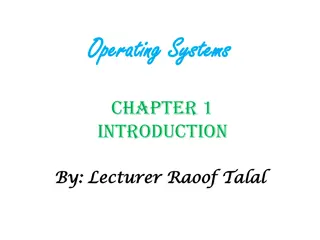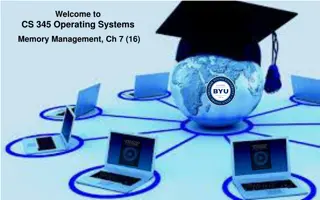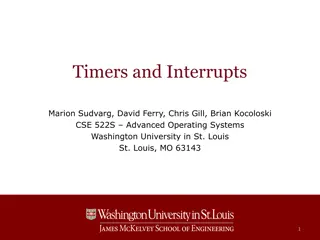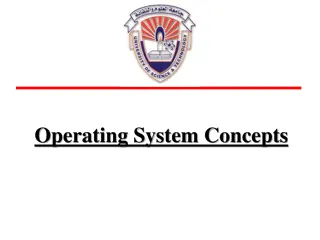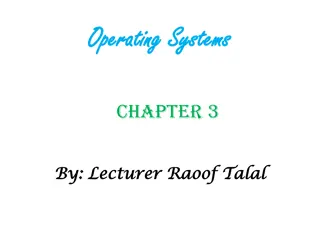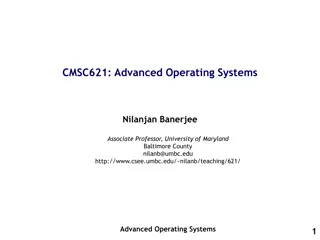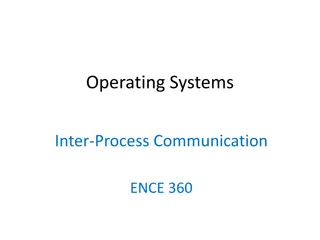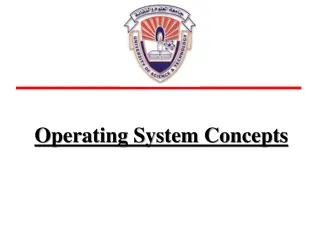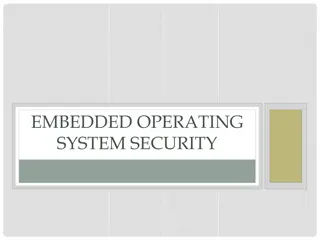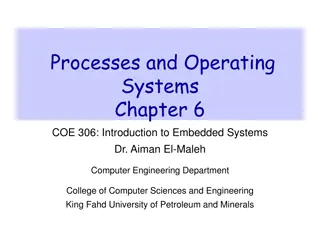Understanding Interprocess Communication in Operating Systems
Interprocess communication (IPC) is essential for processes within a system to cooperate and share information. IPC facilitates message passing and shared memory, enabling processes to communicate and synchronize their actions effectively. This article explores the different models of IPC, such as message passing and shared memory, as well as examples like system pipes and direct communication methods.
Download Presentation

Please find below an Image/Link to download the presentation.
The content on the website is provided AS IS for your information and personal use only. It may not be sold, licensed, or shared on other websites without obtaining consent from the author. Download presentation by click this link. If you encounter any issues during the download, it is possible that the publisher has removed the file from their server.
E N D
Presentation Transcript
Interprocess Communication Processes within a system may be independent or cooperating Cooperating process can affect or be affected by other processes, including sharing data Reasons for cooperating processes: Information sharing Computation speedup Modularity Convenience Cooperating processes need interprocess communication (IPC) Two models of IPC Shared memory Data Transfer
Cooperating Processes Independent process cannot affect or be affected by the execution of another process Cooperating process can affect or be affected by the execution of another process Advantages of process cooperation Information sharing Computation speed-up Modularity Convenience
Communications Models Message Passing Shared Memory
Examples of IPC System PIPES Data streaming Direct communication Ordinary pipes Producer Consumer fashion Cannot be accessed outside the process that creates it. Usually Parent Child communication Deleted when process terminates Named pipes Alias: FIFO in unix Appear as typical files in the system
IPC Data Transfer Message Passing Mechanism for processes to communicate and to synchronize their actions Message system processes communicate with each other without resorting to shared variables IPC facility provides two operations: send(message) message size fixed or variable receive(message) If P and Q wish to communicate, they need to: establish a communicationlink between them exchange messages via send/receive Implementation of communication link physical (e.g., shared memory, hardware bus) logical (e.g., logical properties)
Direct Communication Processes must name each other explicitly: send (P, message) send a message to process P receive(Q, message) receive a message from process Q Properties of communication link Links are established automatically A link is associated with exactly one pair of communicating processes Between each pair there exists exactly one link The link may be unidirectional, but is usually bi- directional
Indirect Communication Messages are directed and received from mailboxes (also referred to as ports) Each mailbox has a unique id Processes can communicate only if they share a mailbox Properties of communication link Link established only if processes share a common mailbox A link may be associated with many processes Each pair of processes may share several communication links Link may be unidirectional or bi-directional
Indirect Communication Operations create a new mailbox send and receive messages through mailbox destroy a mailbox Primitives are defined as: send(A, message) send a message to mailbox A receive(A, message) receive a message from mailbox A
Indirect Communication Mailbox sharing P1, P2, and P3 share mailbox A P1, sends; P2and P3 receive Who gets the message? Solutions Allow a link to be associated with at most two processes Allow only one process at a time to execute a receive operation Allow the system to select arbitrarily the receiver. Sender is notified who the receiver was.
Examples of IPC Systems - POSIX POSIX Message Passing Processes can exchange messages by using four system calls: msgget(mailbox_name, IPC_CREAT) Converts a mailbox name to a message queue ID (msqid). It will create the mailbox if necessary. Returns the msqid. msgsnd(msqid, message@, message_size) Sends the message to the mailbox msgrcv( msqid, message@, message_size, priority, synch/asynch) Receives the message from the mailbox msgctl(msqid, IPC_RMID, dummyParam@) Release the mailbox from process resources
Communications in Client-Server Systems Sockets Remote Procedure Calls
Sockets A socket is defined as an endpoint for communication Concatenation of IP address and port The socket 161.25.19.8:1625 refers to port 1625 on host 161.25.19.8 Communication consists between a pair of sockets
Socket Communication Application Application Socket Socket Transport layer Transport layer Network layer Network layer Link Layer Link Layer Physical Layer Physical Layer
Remote Procedure Calls Remote procedure call (RPC) abstracts procedure calls between processes on networked systems Stubs client-side proxy for the actual procedure on the server The client-side stub locates the server and marshalls the parameters The server-side stub receives this message, unpacks the marshalled parameters, and peforms the procedure on the server
Examples of IPC Systems Shared Memory POSIX Shared Memory Process first creates shared memory segment segment id = shmget(IPC PRIVATE, size, S IRUSR | S IWUSR); Process wanting access to that shared memory must attach to it shared memory = (char *) shmat(id, NULL, 0); Now the process could write to the shared memory sprintf(shared memory, "Writing to shared memory"); When done a process can detach the shared memory from its address space shmdt(shared memory);




